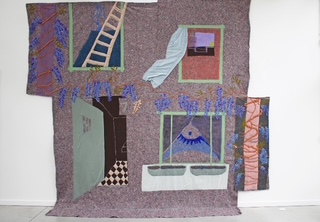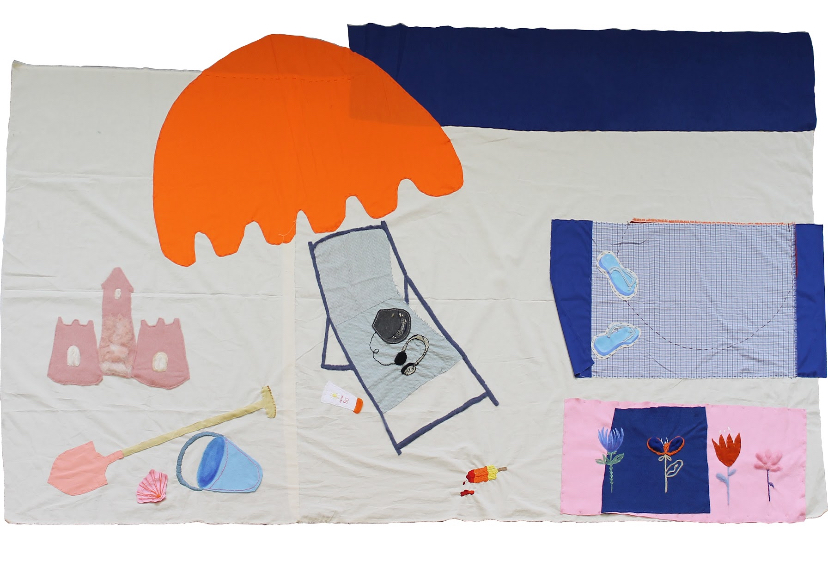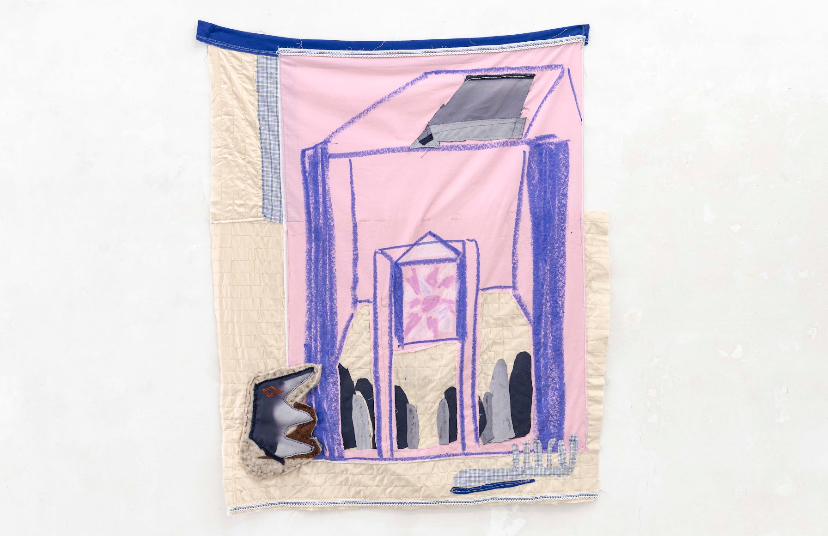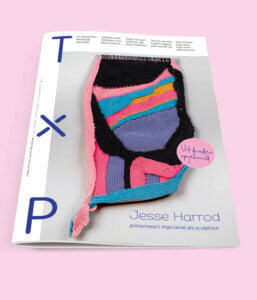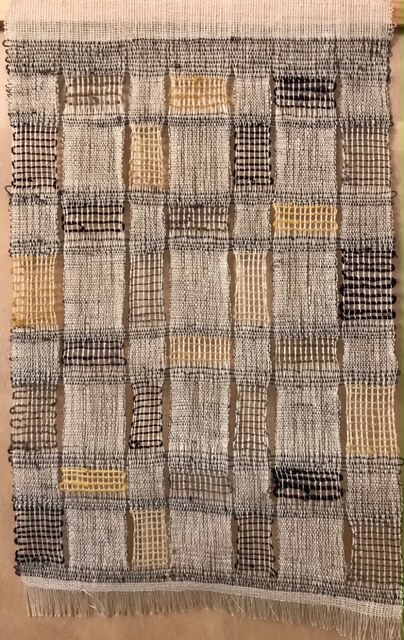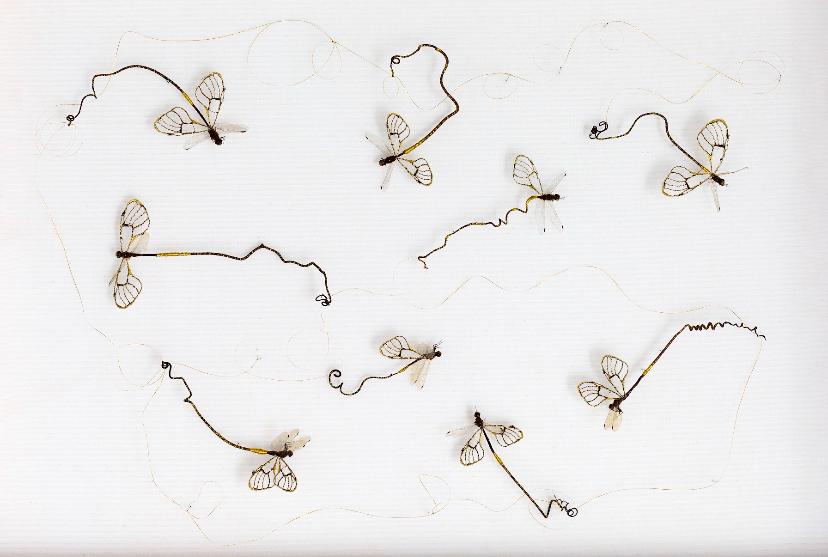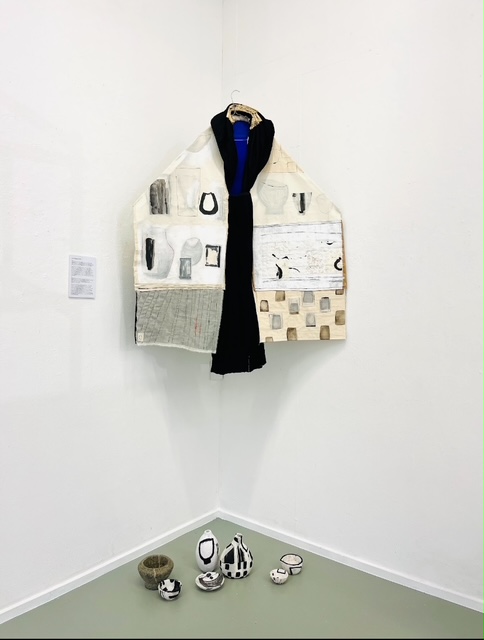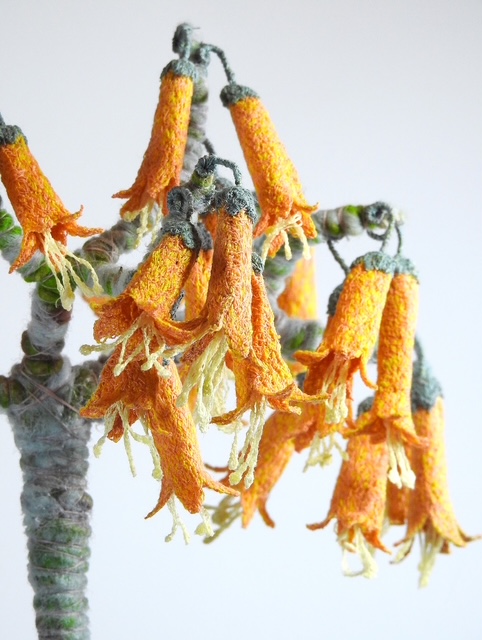Celina Vleugels creëert gezellig ogende stofmontages met een onmiskenbare verdrietige ondertoon
Als kijker verdwijnt je besef van tijd naar de achtergrond terwijl Celina Vleugels je meeneemt in een denkbeeldige wereld, verlangend naar de dagen van weleer. De Belgische kunstenaar (1996) zoekt een mogelijkheid om de meest kwetsbare versie van zichzelf uit te kunnen werken in de vorm van stofmontages gecombineerd met garen, verf en handborduurwerk. Haar werk kan er dan wel gezellig uitzien, maar heeft altijd een droevige, melancholische ondertoon.
Tekst: Dorothé Swinkels
In tegenstelling tot het zachte materiaal dat ze gebruikt, snijdt Celina in haar werk pittige thema’s aan zoals: hoe gaan we om met het verlies van een dierbare (ze verloor heel jong haar moeder die actief werkte met textiel). Moeten we onszelf beschermen? Ben ik echt mijn eigen ik? Het medium textiel sluit goed aan bij haar gevoelswereld en heeft haar de tools gegeven om opener en dichter bij zichzelf te komen om zo haar ideeën te kunnen uitwerken. Soms gebruikt ze toevoegingen als garens en verf.
As a viewer, your sense of time fades into the background as Celina Vleugels draws you into an imaginary world, longing for days gone by. The Belgian artist (born in 1996) seeks ways to express the most vulnerable version of herself through fabric assemblages, combined with thread, paint, and hand embroidery. Her work may appear cheerful at first glance, but it always carries a sense of sadness and melancholy beneath the surface.
In contrast to the soft materials she uses, Celina addresses powerful and challenging themes in her work—such as how we deal with the loss of a loved one (she lost her mother at a very young age; her mother had worked actively with textiles). Do we need to protect ourselves? Am I truly my authentic self? The medium of textile closely aligns with her emotional world and has given her the tools to be more open and to connect with her inner self, allowing her to fully develop her ideas. She sometimes enhances her work with additions such as thread and paint.
Waarom textiel
De tactiliteit is de reden waarom Celina voor het medium textiel als drager heeft gekozen. ‘De zachte/ verschillende materialen gaande van wol, verhuisdeken, verschillende soorten textiel, borduren, verf hebben allemaal een andere soort gevoeligheid en dat versterkt in bepaalde mate het resultaat van hoe mijn werk zal worden en hoe er naar gekeken kan worden’. Het gevoel van veiligheid en comfort is een gevoel dat zij wil nastreven. ‘Het is een gevoel van magie om een idee te kunnen omvormen tot een textiele of tactiele creatie’.
Why textiles
Tactility is the reason why Celina chose textiles as her medium. “The softness and variety of materials—from wool and moving blankets to different types of fabric, embroidery, and paint, all carry a different kind of sensitivity. That, in turn, influences the outcome of my work and the way it is perceived.” The feeling of safety and comfort is something she strives to evoke. “There’s a sense of magic in being able to transform an idea into a textile or tactile creation.”
Hoop en droom
Celina hoopt dat de kijker ergens geraakt kan worden en haar gevoelsmatigheid kan meevoelen. ‘De toeschouwer kunnen raken is het mooiste compliment dat je kan ontvangen. Een bepaalde fragiliteit, waarin de toeschouwer zich kan onderdompelen in mijn wereld, en er toch zijn eigen beeld en invulling aan kan geven.’ En verder droomt zij van een aanhoudende, gestage carrière.
Hope and dream
Celina hopes that her work can move the viewer on an emotional level. “To be able to touch someone through my work is the greatest compliment one can receive. A certain fragility, in which the viewer can immerse themselves in my world, while still interpreting it in their own way.”
Beyond that, she dreams of a steady, lasting career.
https://www.instagram.com/celinavleugels/
